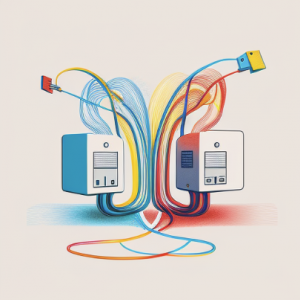
In today’s world of tech wonders, companies require robust and efficient systems to manage their workflows, and packaging design for pharmaceutical and food companies is no exception, specially considering the complexity in the process and the number of stakeholders involved. In order to streamline the process of exchanging information during the different steps of the workflow when more than one system is involved, companies can use REST APIs.
What is a REST API?
REST (Representational State Transfer) API is an interface that allow different software applications to communicate with each other over the internet. REST APIs use HTTP requests to send and receive data, making it easier for software applications to exchange information and interact with each other.
One-directional and Two-directional communication
REST APIs can facilitate one-directional or two-directional communication between different software applications. In one-directional communication, data flows only in one direction, for instance sending an approved artwork to an ERP system. In two-directional communication, data flows both ways, allowing for a more robust exchange of information between different software applications, for instance obtaining a Material Number and providing an approval over a packaging material.
Benefits of using REST APIs for packaging design
REST APIs provide several benefits when it comes to packaging design for pharmaceutical and food companies:
- Streamlined workflow: REST APIs can facilitate a streamlined workflow by enabling different software applications to share data with each other. This reduces the risk of data corruption by ensuring a single source of truth. It can also reduce the amount of time and effort required to manage the packaging design process.
- Increased efficiency: REST APIs can reduce manual data entry and other repetitive tasks. This can lead to faster turnaround times, improved accuracy, and reduced costs. A good example is a Pharma company working with a CMO. Each have their own AMS and both insist in using their own for quality and audit purposes. Without an API connection, data needs to be entered in both systems, usually triggered by email communication, while an API connection can automate the data sharing process reducing in less manual work.
- Improved collaboration: REST APIs can facilitate better collaboration between different teams involved in the packaging design process. For example, designers and printers can use different software applications to work on different aspects of the packaging design process, and REST APIs can be used to share data between these applications, making it easier for team members to work together.
Challenges of implementing REST APIs
While REST APIs can provide several benefits, implementing them can also be challenging:
- Compatibility issues: Different software applications may use different data formats, which can make it difficult to share data between them. When such compatibility issues arise, the time and effort required to implement a connection tends to grow.
- Security concerns: REST APIs can create security risks if not implemented properly. Companies must ensure that their APIs are secure and that data is encrypted to prevent unauthorized access. A good API connection implementation will always secure protocols to encrypt the data while in transit.
- Maintenance: REST APIs require regular maintenance to ensure that they continue to function properly as the different systems involved change over time. Companies may need to allocate resources to maintain their APIs and ensure that they remain up to date with the latest software updates.
REST APIs offer several benefits when it comes to optimising your packaging design workflow. By enabling different software applications to communicate with each other, REST APIs can streamline the process, improve efficiency, and facilitate better collaboration between different teams while reducing manual work and reducing risk.
If you want to know more, check out our public API documentation to see how it can help your process.
